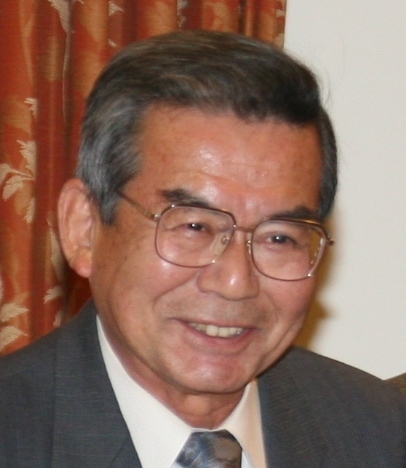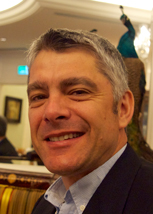
Prof. Nobuyuki Matsui
Chubu University
Emeritus Professor, Nagoya Institute of Technology
IEEE Fellow
IEEJ Fellow

Chubu University
Emeritus Professor, Nagoya Institute of Technology
IEEE Fellow
IEEJ Fellow
In most cases of designing and manufacturing industrial motion control products, the basic hardware is initially designed and the required control functions and/or fine adjustments are left in the hands of control engineers.
However, in order to achieve the sophisticated control functions at the reasonable cost, control theory and hardware are integrally and simultaneously considered, and sometimes, design of hardware should be restricted by control requirements.
From this standpoint, two topics will be introduced through speakerfs latest hands-on experiences.
Today, dramatic changes are happening in the industrial products and market. Considering the automotive industry, a revolutionary mass-production in the past satisfied the consumerfs demands in terms of quality and quantity.
Then, it changed to a large variety small volume production and, recently, the reconfigurable manufacturing system is expected to meet the variations in types and amount of industrial products.
Machine tools having new features and capabilities are also expected and gmodular production equipmenth is one solution.
It performs turning, grinding, drilling, thread cutting and gear cutting independently and a combination of equipment makes a function like a multi-function machine tool.
In the mechanical design, various control procedures such as vibration suppression and synchronous control were incorporated as a premise.
The design of transfer robot in the limited space was indispensable, which had high-speed movement and high accuracy of positioning for connecting each single function.
As another example, general purpose industrial sensor-less drives of PM motor is introduced.
In this case, the requirement on business developments was that the downsized concentrated winding PM motors under the same sensor-less control software should be designed to have the same torque-speed operating range and less torque ripple with those of the conventional distributed winding PM motors.
By this motor, a variety of product developments was secured using the same inverter system and control software.
The speech is closed with future technical issues to be solved.
Prof. Nobuyuki Matsui received the B.S. and M.S. degrees in electrical engineering from Nagoya Institute of Technology, Nagoya, Japan, in 1966 and 1968, respectively, and the Ph.D. degree from Tokyo Institute of Technology, Tokyo, Japan, in 1976.
Since 1968, he has been with the Department of Electrical and Computer Engineering, Nagoya Institute of Technology.
He became Professor in 1985. As a Professor, he has been engaged in research and education on power electronics, design and drives of AC motors and motion control.
From 2004 to 2010, he was the President of Nagoya Institute of Technology.
From 2000 to 2002, he was the President of Industry Applications Society of IEEJ, and from 2004 to 2006, the President of the Tokai Branch of the IEEJ.
After retirement in 2010, he is now a Professor in Chubu University.
He has made major contribution to the Power Electronics and Motion Control through his pioneering work on the application of μP/DSP to power converters, motor control, and motion control.
Today, although the μP/DSP control in Power Electronics and Motor/Motion Control is common, approximately 40 years ago, the application of software to motor drives and converter control was an unexplored area.
He solved them in an original and effective way, and thus laid the technological foundation for digital motor drive and converter control.
Most of his contributions were accepted in industry and were put into use in many industrial products.
Indeed, it is rare to find a university professor who has his results so completely accepted by the industry.
For these contributions, he received the IEEE IAS Outstanding Achievement Award in 2005.
His research areas are the digital control of converters, sensorless drives of ac motors, design of permanent magnet motors and switched reluctance motors, and motion control.
He is the author/co-author of 16 books including gPower Electronics and Variable Frequency Drivesh published by IEEE Press in 1996.

University of Padova,
Department of Management and Engineering
The performance of a motion control system depends on hardware capabilities, such as sensor resolution and actuator technology. Given a certain plant, an amelioration of the performance can be often obtained by using better sensors. This, however, may require a redesign of the system, as the new sensor may not fit the existing plant. As for the actuators, we can still find many motion control systems using stepper motors. Such actuators achieve a limited motion, especially in presence of mechanical resonances, which amplify the typical torque ripple of this type of actuators. Again, a possible solution is the replacement of the actuator with another, with better characteristics, but this may require the redesign of the plant. To improve the performance of the existing plants with minimally invasive modifications, our group has developed a set of solutions, based on the use of low-cost MEMS inertial sensors, which can be easily placed on the system to be controlled. It will be shown how we used such sensors to develop new control strategies, capable to enhance the performance of existing sensors and acuators, without major modifications of the plant. This will be demonstrated through some examples taken from both laboratory and industrial applications.
Prof. Roberto Oboe obtained the Laurea degree in Electrical Engineering in 1988 from the University of Padova, Padova, Italy. During 1990 he has been visiting researcher at the Department of Electrical Engineering of the Keio University - Yokohama - Japan. He obtained the Doctorate degree from the University of Padova in 1992. From 1993 to 2003, he has been with the Dipartimento di Elettronica e Informatica of the University of Padova. From 2003 to 2008 he has been Associate Professor in Automatic Control at the Department of Mechanical and Structural engineering, University of Trento. Since 2008, he is Associate Professor in Automatic Control at the University of Padova, Dep.t of Management and Engineering. In 1996 he has been visiting the Biorobotics Lab. of the Univ. of Washington, Seattle, where he participated to the realization a system for the manipulation of objects in shared virtual environments. In 1997 he has been at the Jet Propulsion Laboratory (JPL), where he has been working on Internet-based telerobotics with haptic feedback. In 2000, he has been visiting scholar at the Center for Magnetic Recording Research, UCSD. IN 2002, he has been visiting faculty at the Department of Mechanical Engineering, Univ. of California, Berkeley. His interests are in the fields of Data Storage, Parametric Identification of mechanical systems, Control and applications of MEMS devices, Applied Digital Control, Telerobotics, Virtual Mechanism, Haptic Devices, Biomedical Equipments. He is author/coauthor of more than 100 contributions, plus 4 international patents. He is Senior Member of the IEEE, VP for Planning and Development of te IEEE Industrial Electronics Society (IES), Chair of the Technical Committee on Motion Control of the IES, IES AdCom member, Technical Committee on Network Based Control member and Publication Board member. He is currently Associate Editor of the IEEE Transactions on Industrial Electronics.